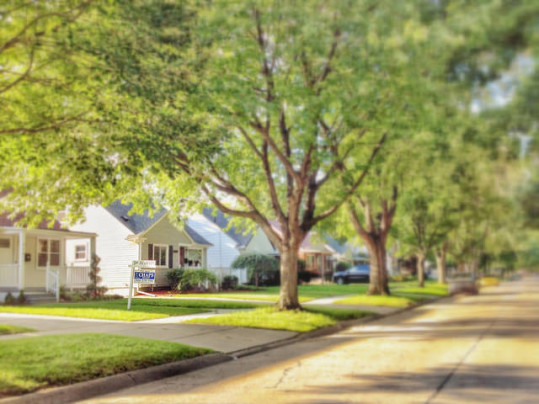The average down payment for single family homes has dropped to a three-year low due to an increasing number of first-time home buyers taking advantage of low down-payment loan programs. The data, from RealtyTrac’s Q1 2015 U.S. Home Purchase Down Payment Report, shows the average down payment was 14.8 percent of the purchase price during the first quarter of this year. That’s down from 15.2 percent in the previous quarter and 15.5 percent a year ago. “Down payment trends in the first quarter indicate that first-time home buyers are finally starting to come out of the woodwork, albeit gradually,” Daren Blomquist, vice president of RealtyTrac said. “New low down payment loan programs recently introduced by Fannie Mae and Freddie Mac, along with the lower insurance premiums for FHA loans that took effect at the end of January are helping, given that first-time home buyers typically aren’t able to pony up large down payments.” In dollars, the average down payment was $57,710 in the first quarter. For FHA loans, the average down payment was $7,609. More here.
Archive for June 2015
Mortgage Credit Availability Continues To Increase
Following the housing crash, potential home buyers looking to secure a loan had a harder time getting approved due to tightened lending standards. The effort to make sure mortgage loans were given to only the most creditworthy buyers meant otherwise qualified buyers were often unable to get financing. In the years since, however, mortgage credit availability has increased and, according to the Mortgage Bankers Association, continues to. In fact, the results of their most recent Mortgage Credit Availability Index found access to financing increased again in May. Combined with historically low mortgage rates and boosted buyer demand, this is good news for the residential real estate market, home sales, and the economy as a whole. The results show that, of the four component indexes, those measuring credit availability for conventional and conforming loans saw the biggest increase, rising 1.2 percent over the previous month. Government loans also saw an increase over April, while jumbo loans were relatively unchanged from the month before. More here.
Potential Home Buyers Say Now Is The Time
The results of a recent survey from Braun Research found that 62 percent of potential home buyers say now is a better time to buy than last year and 30 percent of them plan to purchase a home in the next year and a half. The survey, which asked interested buyers about their plans and concerns, adds to the growing evidence that Americans are ready to buy. Among the most commonly cited reasons for wanting to buy now were the fact that rent is getting more expensive and waiting may mean missing out on today’s historically low mortgage rates and generally favorable buying conditions. In fact, nearly 70 percent of respondents said they worry that they’ve already missed out on the best buying opportunities because of recent price increases. Other worries of potential home buyers included being able to outbid other buyers if necessary and finding a home that fits their budget and is in a good neighborhood. Still, despite their concerns, buyers say they feel it’ll be easier to get a mortgage this year and are willing to make sacrifices in order to buy their dream home. In other words, there is a feeling among potential home buyers that this is the time to buy and waiting could mean having to compromise on their dream house or neighborhood. More here.
Improvement Seen In Nearly 80% Of Metro Markets
The housing market’s recovery has been gradual and, at times, volatile. But, according to new data from Freddie Mac, most local housing markets are showing improvement. In fact, 36 of 50 states are showing an improving three-month trend and 77 of the 100 cities tracked by Freddie Mac’s Multi-Indicator Market Index continue to see gains. The Index – which tracks employment, home purchase application, and delinquency data and compares it to historical norms – is further evidence that the residential real-estate market is getting back to normal. “Better employment prospects, rising home values, and increased purchase activity are all driving improvements in housing markets across the country,” Freddie Mac’s deputy chief economist, Len Kiefer, said. “In this month’s MiMi, three more states and seven metro areas moved within range of their benchmark level of activity.” On a year-over-year basis, the most improved states were Nevada, Oregon, Colorado, Florida, and Michigan. The most improved metro areas were Stockton, Detroit, Denver, Las Vegas, and Palm Bay, Florida. More here.
Mortgage Rates Dip But So Does Demand
According to the Mortgage Bankers Association’s Weekly Applications Survey, average mortgage rates fell last week across all loan categories, including 30-year fixed-rate loans with both conforming and jumbo balances, loans backed by the Federal Housing Administration, and 15-year fixed-rate loans. But despite the drop in rates, both refinance and purchase demand fell from the week before. In fact, the Refinance Index dropped 12 percent and the Purchase Index was down 3 percent. Still, purchase activity remains 14 percent higher than one year ago, indicating a stronger spring selling season than last year. Mike Fratantoni, MBA’s chief economist, told CNBC that, with the decline in refinance activity, the mortgage market is once again dominated by demand for loans to purchase homes. But though recent rate increases have led to a downturn in refinance activity, it is still just one percent lower than it was at the same time last year. The MBA’s weekly survey has been conducted since 1990 and covers 75 percent of all retail residential mortgage applications. Last week’s results include an adjustment for the Memorial Day holiday. More here.
Majority Of Recently Sold Homes Were Affordable
Nearly two thirds of new and previously owned homes sold between January and the end of March were affordable to a family earning the median U.S. income of $65,800, according to new data from the National Association of Home Builders. The NAHB’s Housing Opportunity Index found that housing affordability continues to improve due to favorable market conditions, including historically low mortgage rates and new low down-payment programs that allow creditworthy borrowers the opportunity to buy a home with as little as 3 percent down. “Now is a great time for consumers to buy homes,” NAHB’s chairman Tom Woods said. “Both first-time and move-up buyers can take advantage of these favorable market conditions and start building their American dream.” In fact, recent improvement in the job market has boosted consumer confidence and already helped release some of the pent-up demand in the housing market, leading to a strong start to the spring sales season. Also in the report, the national median home price fell during the first quarter of this year, dropping from $215,000 to $210,000. More here.
Buying A House Now Will Save You Money
According to a new report from the National Association of Realtors, buying a home today will save you more than $200,000 over the next 30 years. The data – part of an effort to weigh the financial benefits of owning a home vs. renting – revealed that the longer you wait to buy a home, the less money you’ll save. In fact, putting off buying a home for even just one year could mean losing out on nearly $19,000 in savings. That’s because mortgage rates and home prices are expected to continuing rising. However, rent has also been increasing nationally and, since it is subject to inflation while homeownership costs are mostly fixed, the sooner you buy a home the more money you’ll save over the long run. Of course, the amount of money saved by buying a home today varies from one local market to the next but, on a national basis, buying is cheaper than renting and – as long as you plan on staying in the home you buy for at least five years – you should benefit financially. More here.







